Inside a Ketamine Clinic: What to Expect From Check-In to Recovery
By Michael Alvear, Health Author & Independent Researcher
My research is published on these scholarly platforms:
Last Updated:
What happens during ketamine therapy at the specially designed treatment centers known as “ketamine clinics?” What do they typically look like compared to a regular doctor’s office? How private is the treatment space? Are you in a room by yourself, or can other patients see you?
Take a Tour of a Ketamine Clinic
Let’s walk through a typical ketamine clinic experience, starting from the moment you step through the door to the moment you leave. You’ll discover what makes these spaces fundamentally different from traditional medical settings.
We’ve organized everything you need to know into 7 essential insights:
↓
Explore My Work In Leading Scholarly Libraries

I’m an independent researcher with work published in scholarly libraries and open-science archives used by clinicians and researchers to discover new research for their own projects.
I write scholarly articles and contribute original, rigorously documented datasets designed to support replication studies, pooled analyses, and evidence syntheses for various aspects of ketamine therapy.
Can’t Decide Between IV, Injections, Or Spravato?
Use My Decision Table

This report ranks all three options—IV, injection, and Spravato—on effectiveness, cost, fastest relief, and more, giving you a clear framework to decide.
Downloads as PDF • 5 minute read
Not a Hospital, Not a Spa, Not A Doctor’s Office:
What It Feels Like Inside a Ketamine Clinic
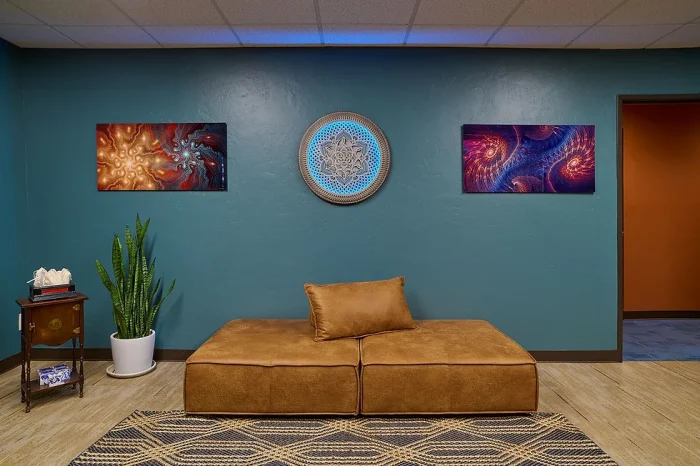
Walking into a ketamine clinic doesn’t feel like walking into a medical facility. There’s no sterile smell of disinfectant, no blinding fluorescent lights, and no sense that you’re just another file in a cabinet. Instead, you’re greeted by an atmosphere designed to soothe, calm, and welcome you—something carefully curated to make you feel like you’re stepping into a place of healing, not treatment.
The waiting area might remind you more of a spa or a boutique hotel lobby than a clinic. Plush chairs or soft couches invite you to sit, not in rigid rows but in small clusters, as if the space is saying, “Relax, you belong here.”
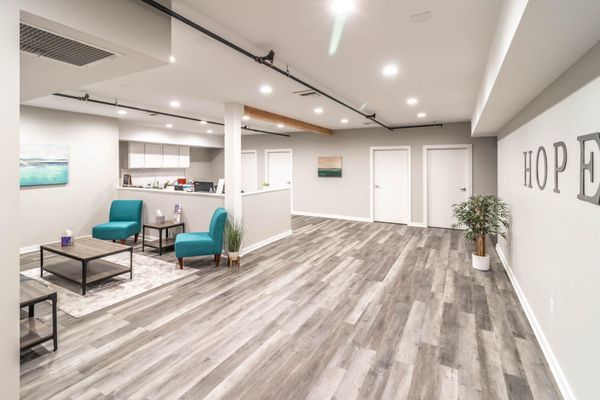
In most clinics, the lighting is warm, often dimmed to create a cocoon-like effect, helping you leave the harshness of the outside world behind. Decor plays its part too. You’ll find calming artwork on the walls—abstract pieces in soothing blues and greens, or landscapes that seem to stretch into infinity.
Some clinics even incorporate nature themes, with potted plants or water features to add a touch of life and serenity. In some clinics you might hear soft instrumental music or nature sounds—birds chirping, waves lapping—playing gently in the background, further blurring the line between therapy and escape.
When it’s time for your session, the treatment room itself continues the trend. Reclining chairs are dressed with cozy blankets and pillows, inviting you to settle in as if for an afternoon nap. The walls are often painted in muted, calming colors—think sage green, soft gray, or pale lavender. Some clinics even use textured wallpaper to create a sense of depth and warmth.
Even the medical equipment is tucked away as much as possible. Monitors to track your vitals are small and unobtrusive, often placed off to the side, their screens dimmed. The IV pole is a sleek stainless-steel stand, not the clunky hospital kind you’d expect. Clinics go out of their way to make these tools fade into the background, creating a calming effect that helps you feel more at ease.
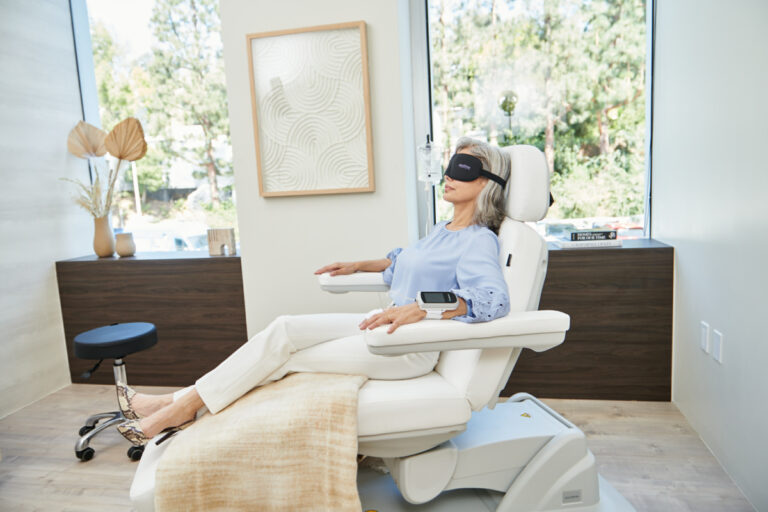
Lighting in the treatment room is especially thoughtful. Forget the harsh overhead glare; here, you might find soft, adjustable lamps or even LED lights that shift in color to match your preference. Some clinics offer eye masks if you’d rather shut out the world entirely, and many provide noise-canceling headphones to create a truly immersive, private experience (bring your own playlist but make sure it’s curated for a psychedelic experience. This means a playlist that’s more of a sonic journey featuring atmospheric, genre-bending tracks with complex instrumentation, non-traditional structures and most importantly, NO LYRICS (they distract from the experience).
Why So Much Thought Put To The Ambience?
Imagine trying to meditate in the middle of a construction zone. The jackhammers, flashing lights, and general chaos would make it nearly impossible to sink into any kind of peaceful state. Now picture the same exercise in a tranquil forest, where the only sounds are rustling leaves and chirping birds. That’s the difference the ambiance of a ketamine clinic makes—it clears the path for your mind to wander where it needs to go.
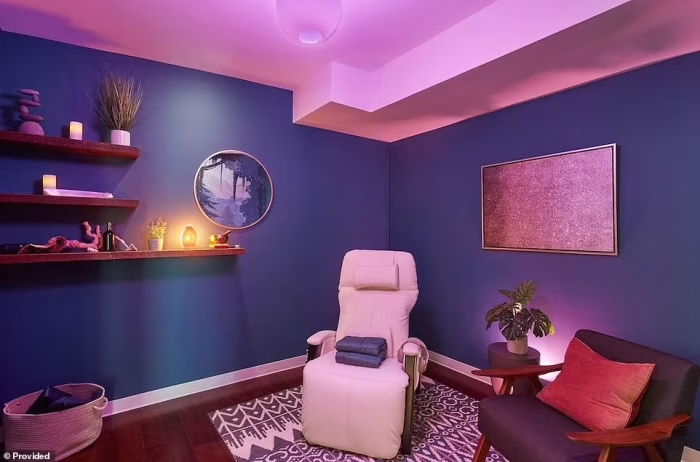
Ketamine therapy isn’t just a medical procedure; it’s an emotional deep dive, a journey into the uncharted waters of your subconscious that’s central to your recovery from depression. For such an experience, the environment becomes an essential aspect of the experience.
The ambiance in ketamine clinics tries to coax your brain to unwind. Think of the ambiance as an emotional co-pilot. Ketamine often brings you face-to-face with parts of yourself you’ve been avoiding—grief, anger, loneliness, or memories buried so deep they’ve grown roots.
That kind of confrontation demands vulnerability, and vulnerability demands safety. In a sterile, impersonal space, your defenses go up, and the medicine has to fight through an emotional brick wall to do its job. But in a thoughtfully designed clinic, where even the IV pole seems like it belongs in an art gallery, those defenses can start to crumble.
The environment also helps to blur the edges between treatment and transformation. The warm lighting, soothing music, and nature-inspired decor create a space where therapy feels less like a transaction and more like a guided journey. It’s the difference between slogging up a mountain on a cloudy day and reaching the summit just as the sun breaks through the clouds.
Ultimately, the ambiance is part of the treatment, not just a nice extra. It creates a cocoon where you can safely shed old layers and emerge with something new. Without it, the journey would be colder, harder, and far less likely to succeed. It’s not just about comfort—it’s about creating the right conditions for the mind to heal.
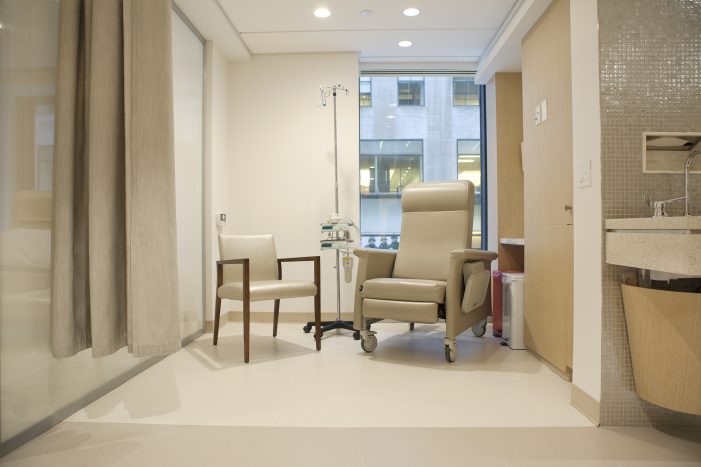
Why Typical Medical Settings Don’t Work for Ketamine Therapy
Trying to have a deeply emotional and introspective experience in a hospital room or doctor’s office is like trying to fall asleep at a rock concert—it’s not impossible, but everything about the environment is working against you. Again, healing with ketamine requires vulnerability, openness, and a sense of safety, and those are hard to come by in places designed for efficiency, not empathy.
Here’s why it’s so hard to have a helpful treatment of ketamine in a doctor’s office or hospital.
1. A Built-In Stress Response
Hospital rooms and doctor’s offices are places most of us associate with bad news, discomfort, or vulnerability. Walking into one, your brain is already on edge, scanning for threats. These spaces scream “Something’s wrong with you” instead of “You’re here to heal.” For patients trying to let ketamine guide them into deep, emotional places, this baggage can act like an anchor, pulling them away from the openness they need.
2. Cold Spaces, Closed Hearts
Ketamine takes you into a dissociative state where you’re detached from the outside world and diving deep into your inner one. That can feel unsettling even in the best conditions. In a cold, impersonal medical space, the unease can become overwhelming, like being thrown into the ocean without a life jacket. Without comfort, it’s hard to let your guard down, and without that trust, the therapy struggles to take root.
3. Sensory Overload
Fluorescent lights that buzz like bees, beeping monitors that pierce the silence, and the sharp scent of antiseptic—hospitals are an assault on your senses. For ketamine therapy, where focus and immersion are key, these distractions are like a marching band crashing a meditation retreat. Instead of drifting into the depths of your mind, you’re yanked back into the chaos of your surroundings. People often have psychedelic visions during their journey; the last thing you need is something distracting you from them. I had tons of them.
4. Trust Is the Foundation
Ketamine can bring long-buried emotions to the surface—grief, anger, or memories you’ve avoided for years. Which reminds me, ketamine is more effective when you pair it with therapy. A therapist can help you with “integration” –processing the emotions, visions, memories and experiences that come up during a session. You can read about my experiences with integration here.
At any rate, to explore those raw feelings, you need to feel safe, and trust is the bedrock of that safety. A hospital’s impersonal design and clinical detachment don’t exactly scream, “Let it all out.” Instead, they whisper, “Don’t make a scene.”
5. The Subtle Power of Beauty
There’s a reason people feel calmer in a lush garden or by the ocean—beauty has a way of soothing the soul. Warm colors, soft lighting, and touches of nature aren’t just decorative; they’re emotional scaffolding, giving you a stable structure to lean on during your journey. Compare that to the stark, utilitarian design of most medical spaces, which seem to say, “Get in, get out, no time for feelings.”
6. Breaking Free from the Everyday
Ketamine therapy invites you to leave the world behind and venture into the uncharted territories of your mind. A typical hospital room keeps pulling you back to reality, with its rigid professionalism and reminders of sickness. It’s like trying to launch into space while tethered to the ground. A serene, thoughtfully designed clinic, on the other hand, is like a launchpad—lifting you out of the mundane and into a space where transformation feels possible.
The Bottom Line
This deliberate rejection of traditional medical aesthetics serves a purpose. Depression can make you feel trapped, broken, or stuck in a cycle of treatments that haven’t worked. A typical clinic challenges that narrative, offering an environment that feels less like a place for sick people and more like a sanctuary for growth and recovery.
It’s not about pretending you’re not receiving medical care—it’s about creating a space where you feel safe enough to let the treatment do its work. And for many, that makes all the difference.
What’s In The Treatment Room?
First, it’s a private room. It’s got to be for such a personal experience. While the environment is relaxing (remember the ambiance, the recliner, blankets, etc.) you’ll notice some medical equipment in the room. The essential equipment includes a vital signs monitor to track your heart rate and blood pressure, an IV stand and infusion pump for those receiving IV ketamine, and an oxygen monitor that clips onto your finger. Emergency medical equipment is kept nearby but out of sight unless needed. This equipment helps the medical team ensure your safety throughout the treatment.
Next to your recliner, you’ll have a wheeled cart with items like a tissue box (it’s not unusual to cry after a deeply moving session), hard candy (helps with dry mouth, gives you a gentle glucose boost if you feel lightheaded), a blindfold (enhances internal focus, facilitating a deeper and more introspective experience) and a vomit bag.
A vomit bag? Yes, for the very few who experience nausea/vomiting (about 7%).
The Medical Team: Your Care Providers
Your care team is made up of skilled professionals who specialize in ketamine therapy. A nurse or medical tech will be your primary point of contact, setting up your IV infusion, administering an injection, or guiding you through the self-administration of Spravato.
Meanwhile, a physician—often an anesthesiologist or psychiatrist—supervises your treatment to ensure everything runs smoothly. Additional support staff are there to make sure you’re comfortable and cared for throughout the process. It’s a calm, coordinated effort designed to put your well-being first.
They Monitor You Like a Hawk
You may be in a private room during your session, but trust me, you’re being observed. Many clinics have “panic buttons” on the cart next to your recliner and a video camera aimed straight at you where they monitor you and other patients in a separate room set up like a NASA control center. Except instead of rockets, they’re monitoring people blasting off into the cosmos of their subconscious.
Some of the most modern ketamine clinics are raising the bar on patient safety by using advanced wireless monitoring systems like the Caretaker 4 and the Vios Monitoring System. These aren’t the clunky machines you’d find in a hospital; they’re sleek, unobtrusive tools designed to keep a watchful eye without intruding on your experience.
The Caretaker 4, for example, offers continuous, non-invasive blood pressure monitoring—a far cry from the traditional arm-squeezing cuffs. Meanwhile, the Vios Monitoring System is like having a digital guardian angel, tracking everything from heart rate and oxygen levels to posture and activity, all in real time.
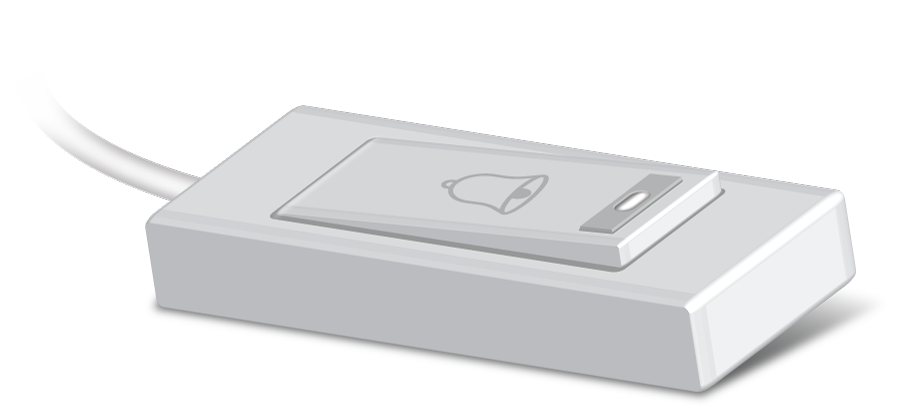
Why Is So Much Monitoring Needed?
Serious side effects are rare, thanks to thorough screening for conditions like a history of psychosis or uncontrolled high blood pressure—factors that could increase risk. On top of that, ketamine is extremely safe when administered at medically supervised doses.
So why all the monitoring? Not because ketamine is risky, but because safety is a priority. Studies show the risk of serious complications is incredibly low, which is part of what makes ketamine therapy such a breakthrough.
The monitoring isn’t about managing high risks—it’s about ensuring that even the smallest possibility of an issue is accounted for, so your treatment experience is as safe and comfortable as possible.
Think of it like wearing a seatbelt on a quiet, empty road. You’re probably not going to need it, but it’s there just in case. Clinics monitor you closely not because they expect anything to go wrong, but because they want to provide the highest level of care.
What It Feels Like To Be on Ketamine
The journey begins quietly. Your body relaxes into the chair, and gravity feels different—not heavy, but cradling, as if the world itself is holding you in place. Sensations soften, your limbs grow heavy, and soon the boundaries between your mind and body begin to blur. A gentle dissociation takes over, like stepping out of yourself and watching from the edges.
But this is just the start. Ketamine unlocks the subconscious, allowing thoughts, images, and memories you’ve buried—sometimes for years—to rise to the surface. Some come as vivid metaphors, like watching a dream play out in real time. Others are painfully direct, bringing emotions or moments you’ve long avoided back into sharp focus.
The experience can be breathtakingly spiritual, like touching something greater than yourself, or deeply unsettling, as unresolved trauma comes to light. Psychedelic visions often hold a mirror to your inner world—swirling colors, symbolic journeys, or fragments of memories that feel both distant and immediate. For some, it’s a sacred awakening; for others, it’s a confrontation with the parts of themselves they’ve spent a lifetime running from.
Not all of it makes sense in the moment, and that’s okay. Ketamine isn’t about finding easy answers. It’s about letting the subconscious speak, whether in whispers or roars. The real work begins afterward, when you unpack these experiences with your therapist, teasing out the meaning behind the metaphors or facing the truths that surfaced.
Ketamine therapy is not a pastel-painted escape—it’s a raw, unfiltered look at your inner world. It challenges, transforms, and ultimately, it heals, creating space for growth where there was once only pain.
Most people who’ve undergone ketamine therapy would probably agree—it’s one of the most profoundly fascinating experiences you’ll ever have. It’s not just interesting; it’s unforgettable, even life-changing. Here’s more of what the experience is like.
Coming Out of the Journey
Coming out of a ketamine journey feels like waking up from a dream that wasn’t quite sleep. The dissociation fades slowly, like fog lifting from a quiet lake, and the edges of reality start to sharpen again. Your body feels heavier, more present, but the weight isn’t uncomfortable—it’s grounding, like being gently pulled back into yourself.
The room around you comes into focus, familiar and safe, though it might take a moment to reconnect with it fully. Thoughts that seemed abstract or distant during the session begin to settle, sometimes leaving you with a sense of clarity, other times with questions that linger like faint echoes.
There’s often a strange calm, even after a challenging session—a feeling that something inside you has shifted, even if you don’t yet know how. As you sit there, still wrapped in the blankets of the journey, the world feels quieter, softer, like it’s giving you the space to absorb whatever just happened.
Rest, Recovery & Exit
Once the effects of the ketamine have mostly worn off, you’re given time to sit quietly and gather yourself. There’s no rush. The clinic staff understands that this isn’t just a medical procedure—it’s an emotional and psychological journey—and they give you the space to process it.
You might feel a little groggy or disoriented at first, like shaking off the remnants of a vivid dream. Many patients describe this time as peaceful, even reflective. You’re encouraged to hydrate, relax, and let your body fully come back to baseline.
Before you’re released, a member of the medical team will check your vital signs, including your blood pressure. While ketamine is very safe at therapeutic doses, it can cause a temporary increase in blood pressure for some patients during the session. The check ensures that everything has returned to normal and that you’re physically ready to head home. It’s a simple precaution—a way to confirm that you’re stable and well after such a powerful experience.
Total time from entering the clinic to leaving it? About 2 hours, but it depends on how the ketamine is administered. Click here to read about the average time spent in a session.


